Another capsize in Route du Rhum
Published on November 14th, 2018
(November 14, 2018; Day 11) – The 2018 Route du Rhum-Destination Guadeloupe solo transatlantic race saw the second capsize in this 11th edition of the four-yearly classic when a 50ft trimaran flipped over today at around 0630 (UTC) about 1,000 nautical miles east of Guadeloupe.
The first capsize came at the end of day two of the 3,452-nautical mile race when one of the biggest yachts in the 123-strong fleet, the 32m Banque Populaire IX, turned over after a major structural failure in a gale midway between the coast of Spain and the Azores. The boat’s skipper, Frenchman Armel Le Cleac’h, was quickly rescued by a Spanish fishing boat.
This time the yacht going upside down is the Multi50 class trimaran Arkema skippered by Lalou Roucayrol, another French sailor who is based near Bordeaux. Roucayrol is one of the most experienced solo offshore racers in big multihulls and was competing in his fourth Route du Rhum-Destination Guadeloupe.
The capsize occurred when the boat became over-powered by a sudden and violent spike in the easterly trade wind as he ran downwind towards the finish at Pointe-à-Pitre in Guadeloupe. He did not have time to stop his yacht tipping over but was able to keep safe within the main hull.
Roucayrol would then exit to spend about four hours cutting the rig away from the boat, noting the hull had not been damaged by the mast and that he managed to salvage one of his sails. He is now safely back on board and has enough food for three or four days and water supplies for 10 days.
A cargo ship has been diverted to his position but Roucayrol has made it clear he does not want to be rescued and is staying with his boat until a tug chartered by the team from Martinque reaches him in four days time.
Roucayrol was racing in fourth place at the time of the capsize and was about 400 miles behind the class leader, Armel Tripon on Réauté Chocolat. Tripon on his brown trimaran is now just over 500 miles from the finish and is expected to arrive tomorrow at around mid-day (UTC).
He has also been experiencing alarming variations in windspeed and has elected to take it easy to avoid suffering a similar fate as Roucayrol. “It could be better,” said Tripon. “That has been the most complicated, difficult night I’ve had since the start with gusts of 33-34 knots under gennaker. The sea got big quickly; it was really hard, so a tense night. So this morning, I rolled away the gennaker and it is away until the seas subside – it is a really difficult end to the race.”
About 12 hours after Tripon is expected to reach the line, the next finisher is expected to be Britain’s Alex Thomson on Hugo Boss who has led the 20-strong IMOCA monohull class almost continually from the start on November 4th.
Thomson is just over 700 miles from the finish and about 160 miles ahead of his nearest pursuer (Paul Meilhat of France on SMA) and can’t wait to complete what will be his first victory in an IMOCA race.
“I am on my final gybe,” he said in a radio call this morning as Hugo Boss surfed at up to 20 knots in the boisterous trade winds. “I managed to get a bit of sleep over the night, not that much but I am really looking forward to getting in. There is not long now, less than a couple of days. That’s one Fastnet, one Fastnet race, that is all that is left. I should get in in daylight which is good timing really.
“I am a little nervous, yes, but the gap should be big enough. I am just trying to sail my normal race really, trying not do anything differently and keep things in the best shape I can. I don’t need to push; on the other hand these boats do go fast. It is quite hard to make them go slow. I am not going to go super-slow; I will sail my normal race and I look forward to getting round the island and in.”
A long way behind him the only Finnish sailor in the IMOCA fleet, Ari Huusella on Ariel II, has provided more detail about the brief and glancing crash between his boat and the monohull of French sailor Sébastien Destremeau who is lying in second place in the Rhum Mono fleet.
The incident happened in the early hours of yesterday in darkness as Huusella was heading west and Destremeau on board Alcatraz It FaceOcean was crossing his path while heading south at a position about 400 miles west-southwest of the Canary Island.
The Finn admitted today that he could see Destremeau approaching using the Automatic Identification System (AIS) that all boats in the race carry, but he had his screen on the wrong setting and did not realize how close the Frenchman – who was asleep and under auto-pilot – would be until it was too late.
“I was inside the boat and saw on the AIS that there was some traffic coming,” said Huusela who, like Destremeau, has been able to continue racing. “I saw the name of the boat and I knew who it was. I called him three times on the VHF but there was no reply. I checked that we were not going to hit on the AIS but our speeds were varying a lot because of the gusts. Sometimes we were going 10 and sometimes 17 knots – it was the same for both boats.
“The thing I did not realize was the scale on my AIS was only at 0.75 miles so the full screen was at less than a mile when he came into my screen. Normally I use the 15-mile scale. I was a bit tired and a bit disorientated and did not realize he was so close.
“When I realized he was so close, I went outside and I saw the nose of his boat coming at me at 17 knots. I thought ‘oh god, this is going to be the end.’ But luckily I managed to get under him so he hit the back corner of my stern, his bowsprit came into my pushpit, and it came off.”
Huusela said he initially thought the damage to his rigging might bring his mast down but he released the mainsail to ease the load and managed to save it. The sailors then spoke on VHF and Destremeau told him he had been asleep at the time of the crash and that he had some damage to his bowsprit.
“We exchanged some e-mails last night and we are both happy,” added Huusela. “We are lucky because it could have been so much worse.”
In the Class40 fleet the lead remains firmly in the hands of Frenchman Yoann Richomme on Veedol-AIC who has a margin of around 100 miles over second-placed Aymeric Chapellier on Aina Enfance Et Avenir. Chapellier reported today that he blew-up his spinnaker in a squall and has had to spend hours repairing it, turning the inside of his boat into a sewing workshop.
The 38-year-old sailor from La Rochelle was asleep when the boat broached in about 18 knots of breeze. “The sail literally exploded. I had to transform the interior of the boat into a sailmaker’s workshop and I worked on it all day, from sunrise to sunset. It was not easy because I had to leave the boat under the autopilot, with the big spinnaker,” he said.
“But I managed to repair my spinnaker and it held this morning when I used it. That being said, I walk a little on eggs now. I am trying to preserve all my spinnakers, especially in this strange seaway. At times, it is really very short and it requires a lot of manoeuvres, which tires a little man,” Chappellier added.
Event details – Ranking – Tracker – Facebook
Background: The 11th edition and 40th anniversary staging of the Route du Rhum-Destination Guadeloupe solo transatlantic race got underway on November 4. This iconic 3,542-nautical mile course will take the record entry of 123 skippers in six divisions – Ultime, Multi 50, Imoca 60, Class 40, Rhum Multi, and Rhum Mono – from the start off the Brittany port of Saint Malo (France) to Guadeloupe.
Source: Route du Rhum-Destination Guadeloupe


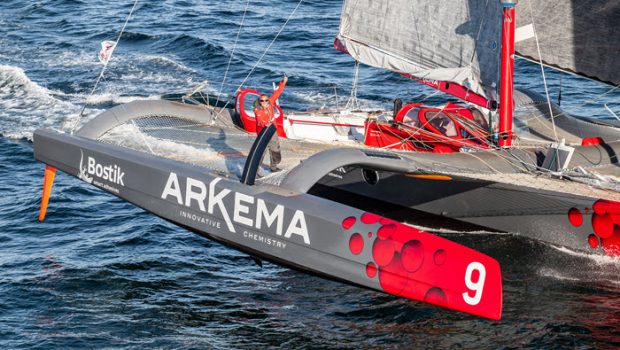


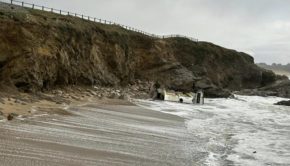
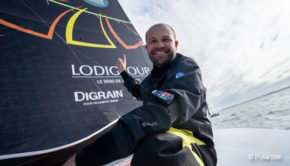
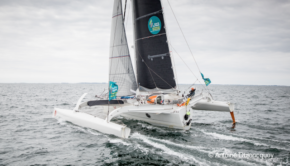
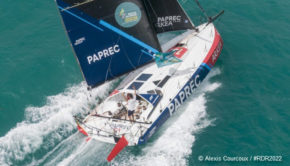
 We’ll keep your information safe.
We’ll keep your information safe.